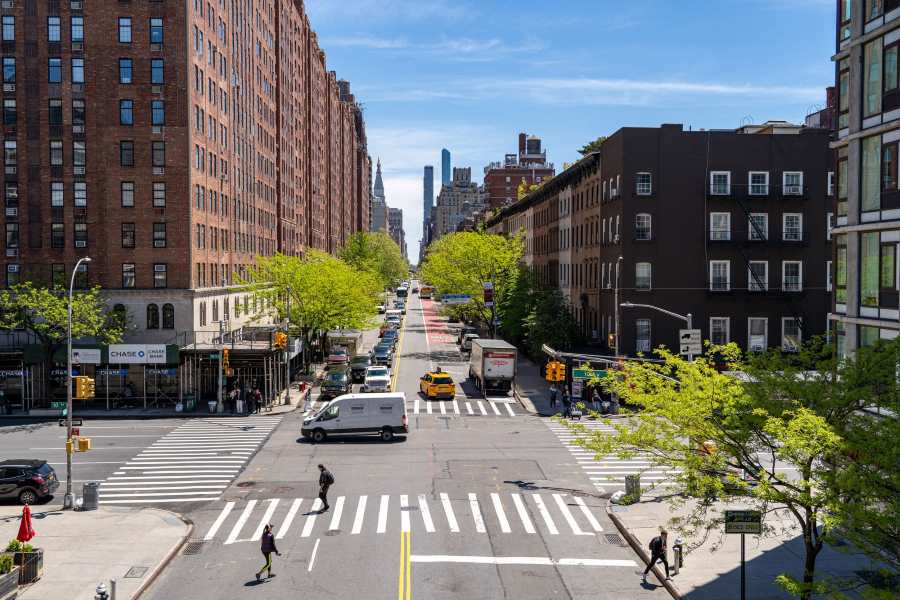Monday, June 9, 2025
New York City — once the country’s most vibrant magnet for international travelers — is feeling the squeeze in 2025. Fueled by growing anxiety over U.S. border policy, Trump-era immigration rhetoric, and a Canadian boycott, foreign arrivals to NYC are projected to fall sharply.
According to NYC Tourism + Conventions, the city anticipates 2 million fewer international visitors this year — a nearly 17% decline, bringing numbers down to approximately 12.1 million foreign tourists, compared to an earlier estimate of 14.6 million.
1. Border Concerns & Visa Fears Deter Travelers
Countless visitors and would-be tourists are citing fears of visa denials, prolonged customs checks, or “being detained at the border.” Australian traveler Bill Martin told CNN he’s noticed widespread unease among fellow tourists . An Italian student, Eman Moretti, explained how Trump-era restrictions spawned uncertainty around family reunions in NYC. Similarly, Ecuadorian visitor Javier Muenala remarked that risks of visa cancellation made many travelers think twice .
2. Economic Impact from Declining Tourism
- World Travel & Tourism Council (WTTC) predicts a $12.5 billion drop in inbound travel spending for the U.S. in 2025 — a 7% decline from 2024.
- With international visitors accounting for 20% of overall tourists but 50% of visitor spend, NYC stands to lose several billion dollars in revenue.
- Tourist spending in NYC, which hit $51 billion in 2024, now faces a potential $4 billion contraction.
3. Canadian Boycott Hits Hard
Canada, traditionally the largest source of inbound tourists, appears to be turning away. Reports show Canadian tourism spending in the U.S. fell from 20.4 million visits in 2024, down significantly with only 20% planning U.S. travel in 2025, and cancelations near 40–50%. This backlash is translating into 800,000 fewer Canadian tourists in NYC and broader implications for U.S. tourism, including airline revenue and sightseeing businesses.
4. Broader International Reluctance
- Australian arrivals to the USA dropped 7% in March 2025 — marking the most significant decline since the pandemic.
- European nations have issued travel advisories citing uncertainties around U.S. policy toward transgender and nonbinary travelers, further affecting tourists from the UK, Germany, and beyond .
- Combined pressure has depressed inbound tourist spending by 22% compared to 2019 .
5. Local Tourism Industry Feels Sting
- Tour operators and local guides report stark drops — from 20 guests per tour last year down to as few as 5 .
- Economic ripple effects hit sectors from Broadway and museums to hotels and restaurants, where significant layoffs are anticipated if the slump continues .
- Senator Jacky Rosen warns that tourism hubs like Las Vegas are experiencing declines too due to similar anxieties.
6. Government Response & Outlook
- NYC Tourism + Conventions launched the “With Love + Liberty, New York City” campaign in May to reassure potential visitors.
- The U.S. Travel Association is partnering with Customs and Border Protection (CBP) to disseminate accurate guidance and counter misinformation.
- Meanwhile, the State Department continues to issue advisories on international destinations; some countries now flag travel to the U.S. due to concerns about border detention and legal protections.
7. Future Prospects: World Cup & Semiquincentennial
New York and nearby areas anticipate staging major events—like the 2026 FIFA World Cup (in East Rutherford, NJ) and the U.S. 250th anniversary in 2026—to help reinvigorate interest. However, industry leaders caution that restoration may take time while global perception remains cold .
8. Why This Matters
- A $50 billion U.S. travel trade deficit now reflects how Americans spend more overseas than foreign travelers spend in the U.S.
- Tourism supports over 376,800 NYC jobs in hospitality, sights, and transportation — many of which are at risk if visitor numbers don’t rebound.
- The emerging sentiment that the U.S. is less welcoming can have lasting repercussions on global tourism and cultural diplomacy .
Final Take
New York City is at a critical juncture. Despite recovery strides since COVID‑19, current geopolitical and policy-induced hesitations threaten to derail the resurgence. Border control as a deterrent, combined with strained international relations—especially with Canada and Europe—underscore the need for targeted messaging, clear travel guidelines, and immigration reform.
The question now: will global tourists see the U.S. as shaping up to be a land of opportunity and welcome, or a bureaucratic and politically uneasy destination? NYC’s future—and much of the U.S. tourism economy—may hinge on the answer.
